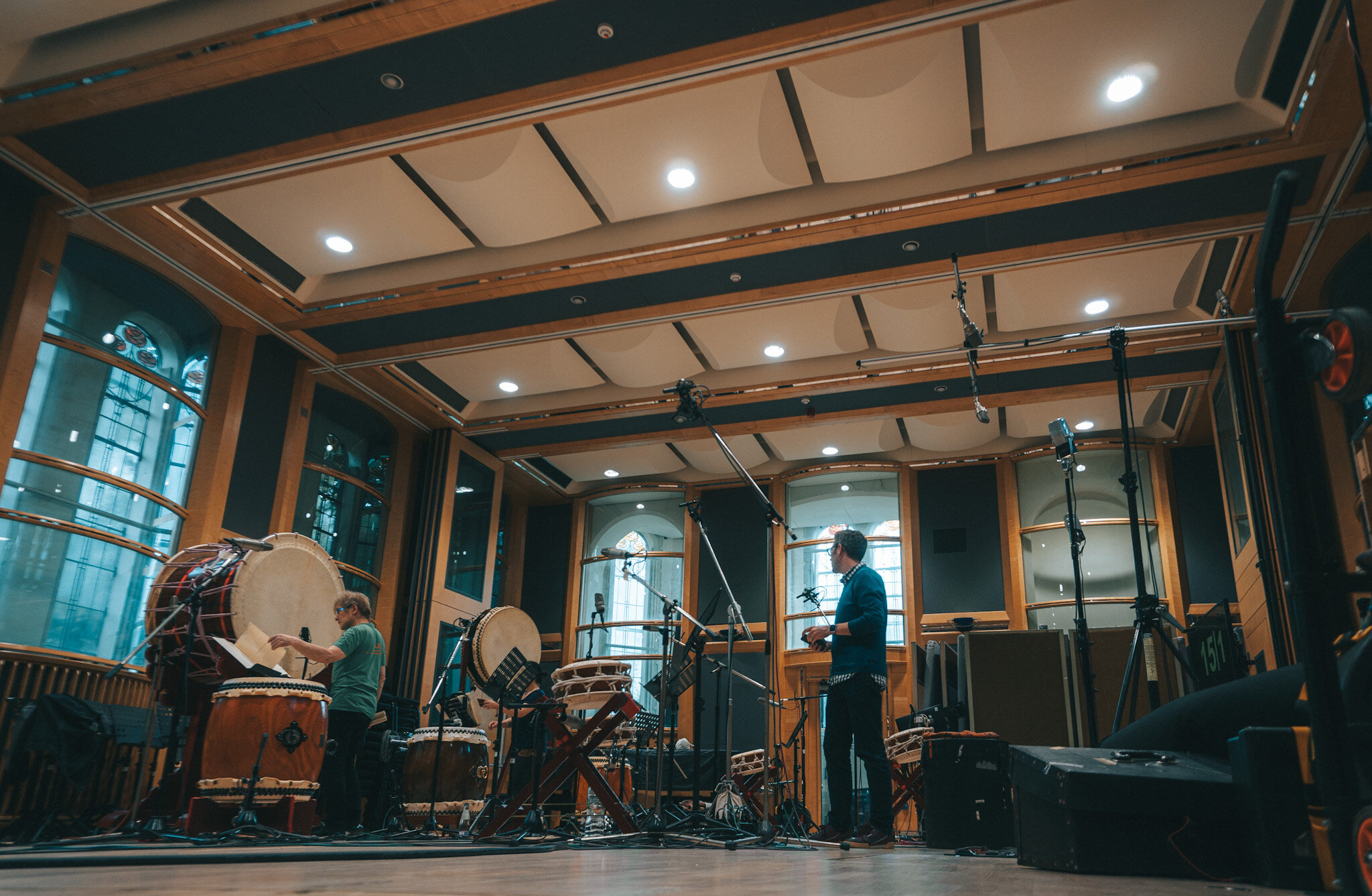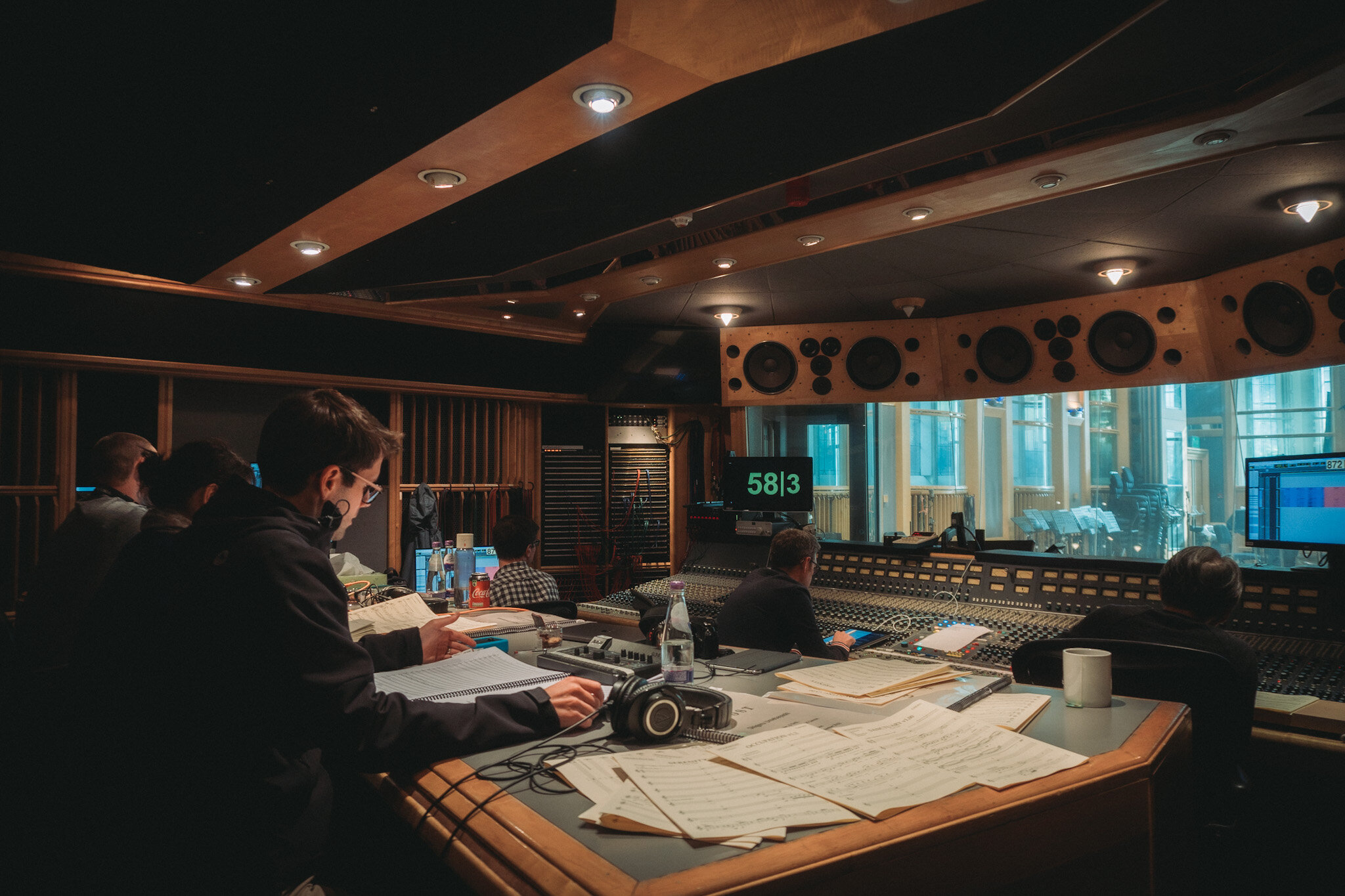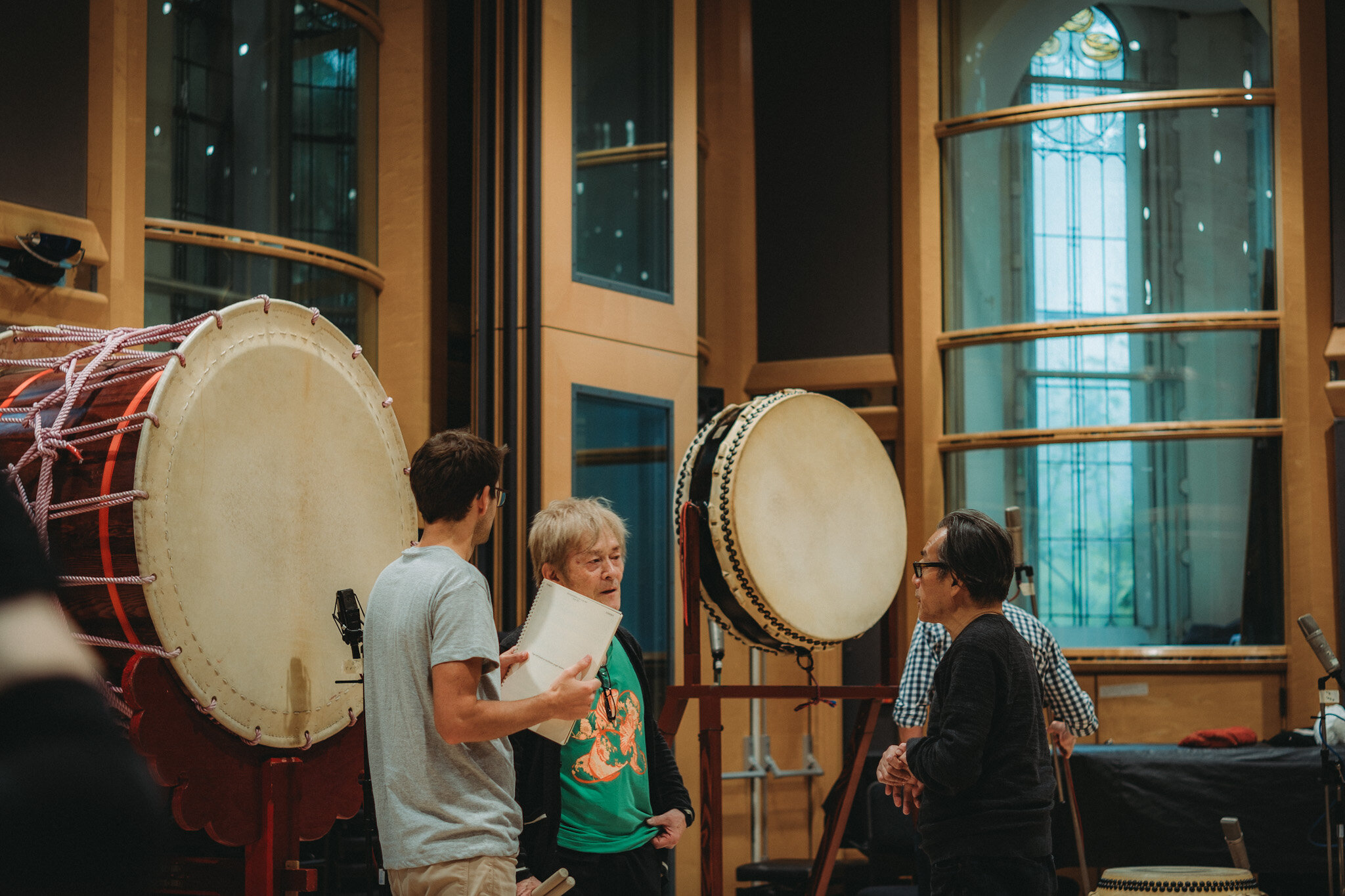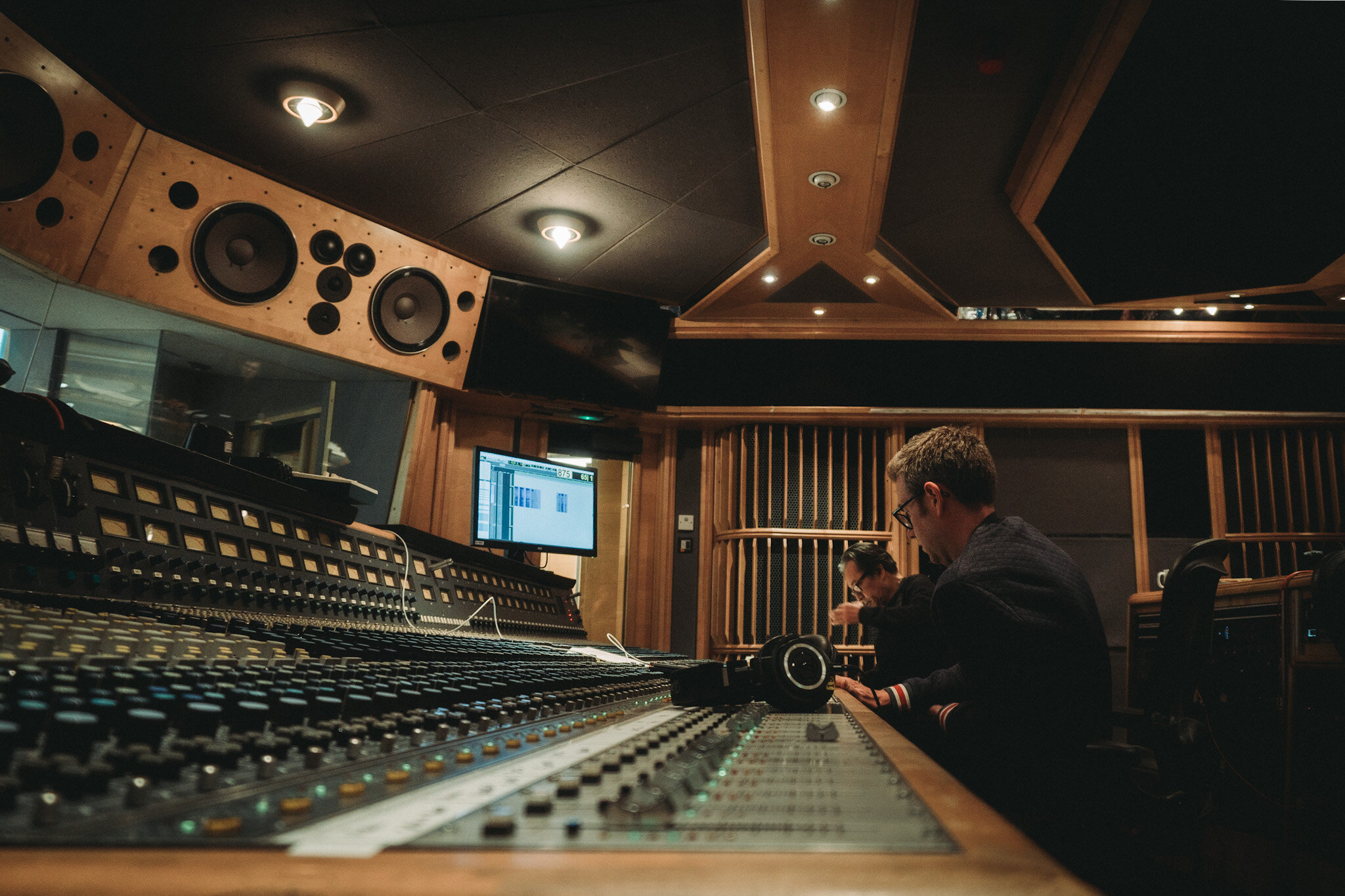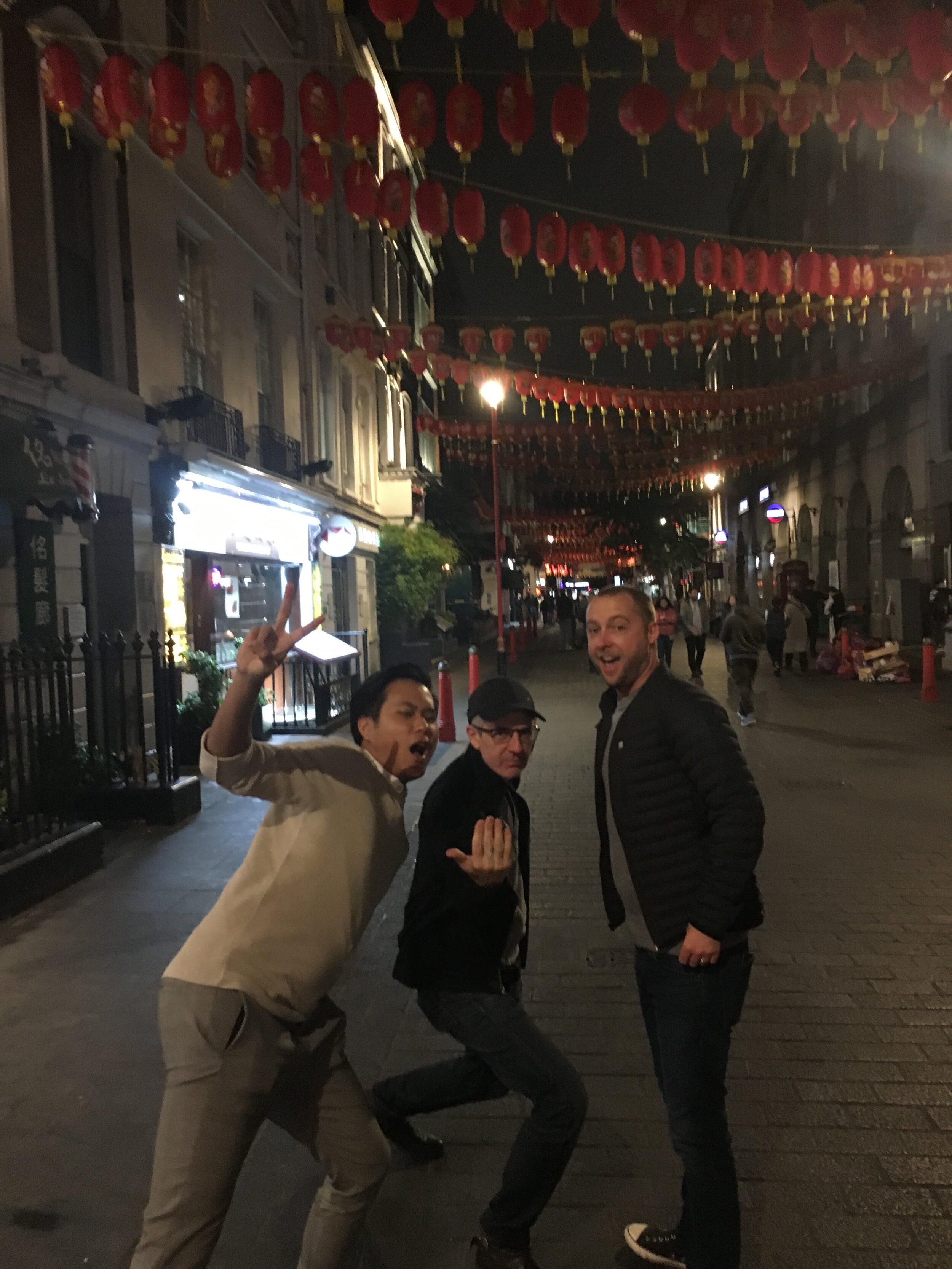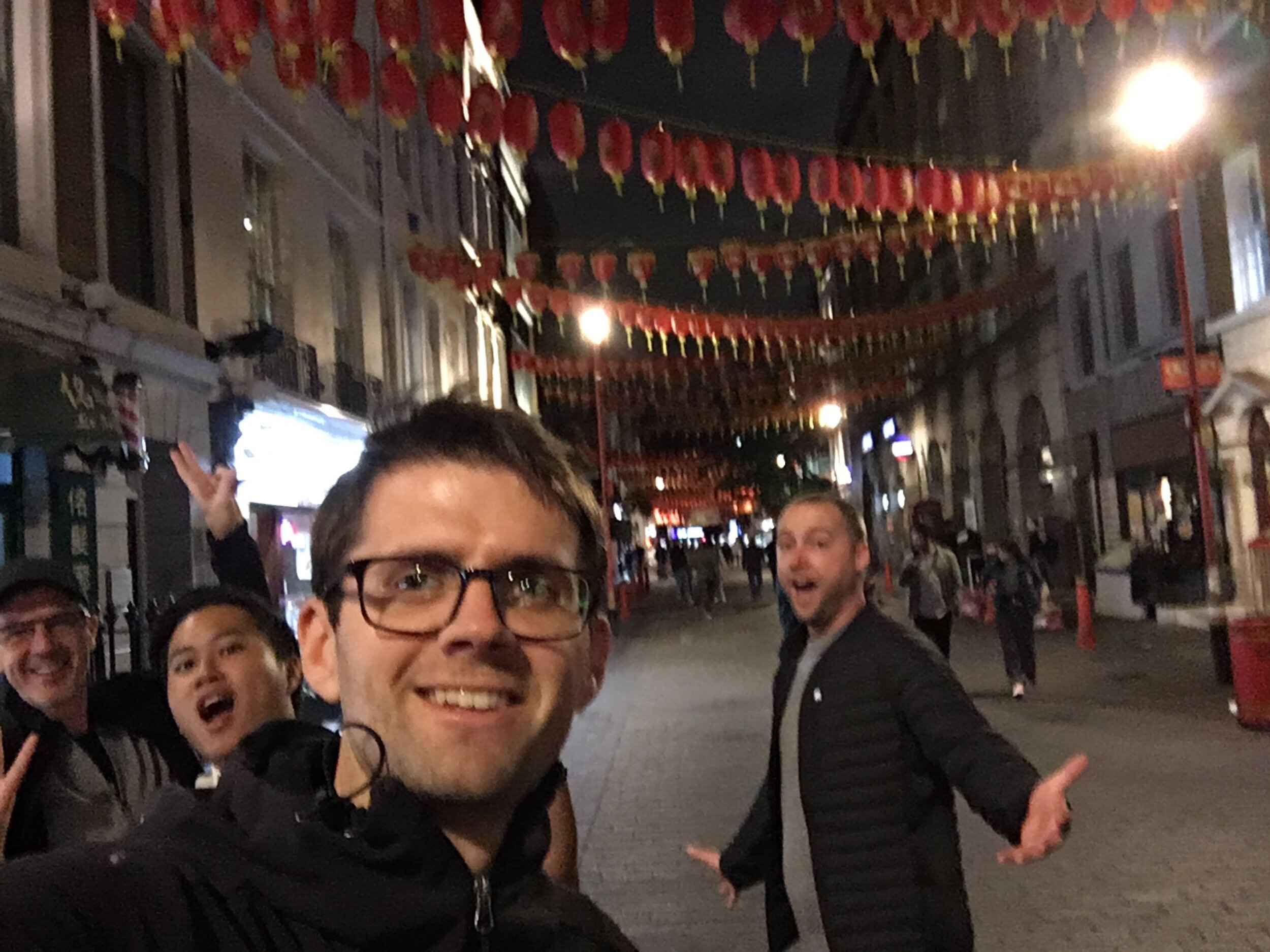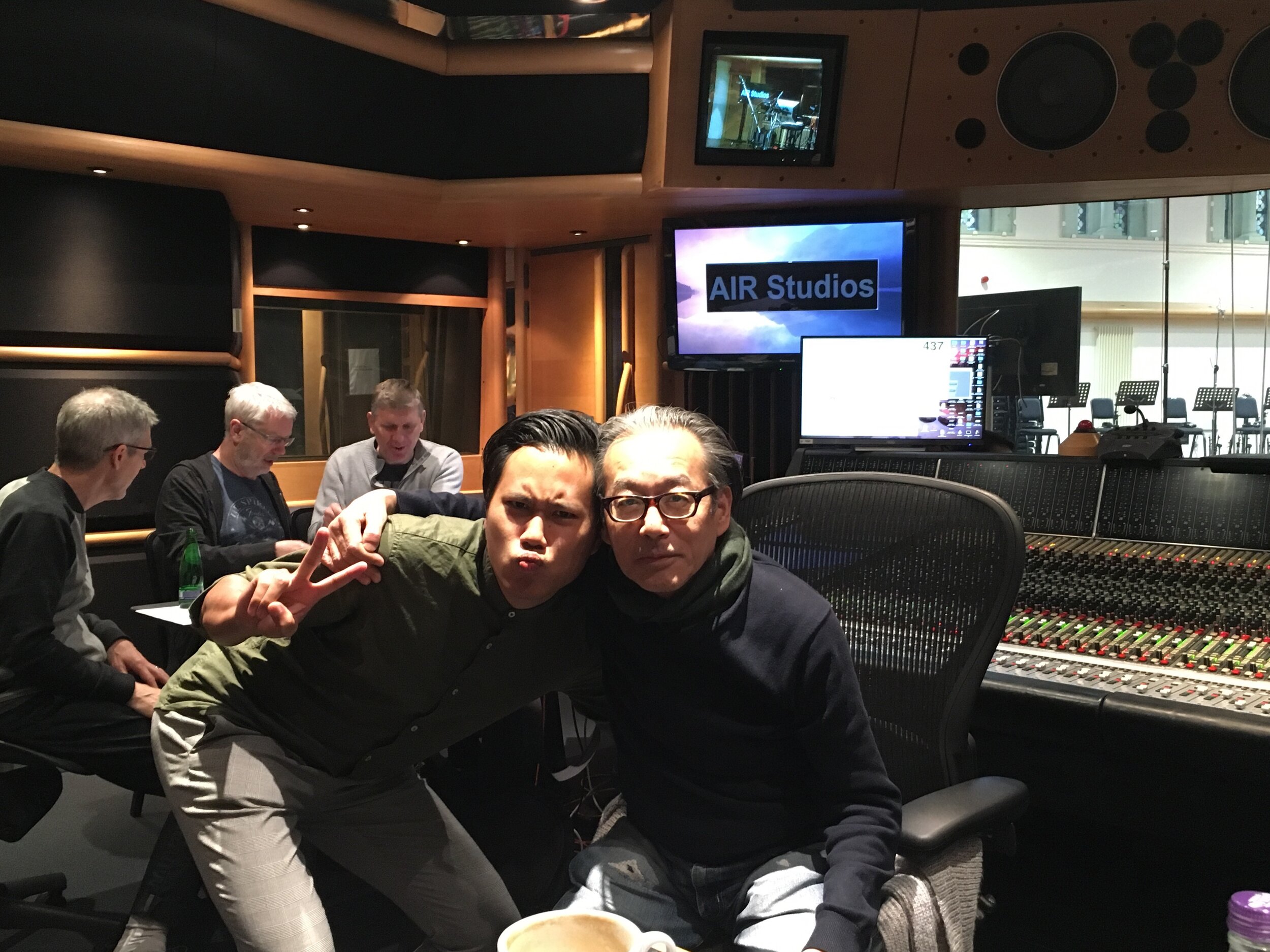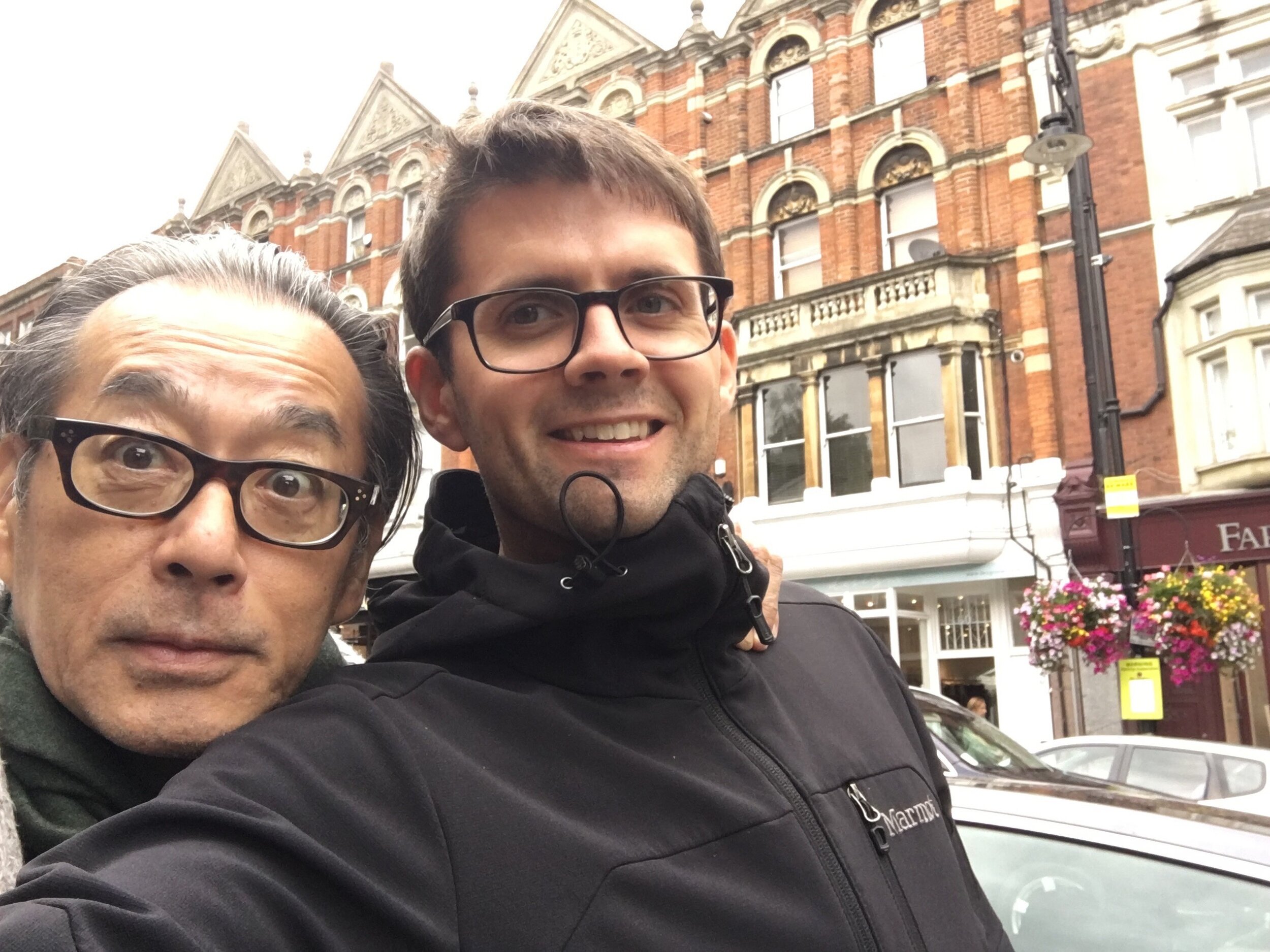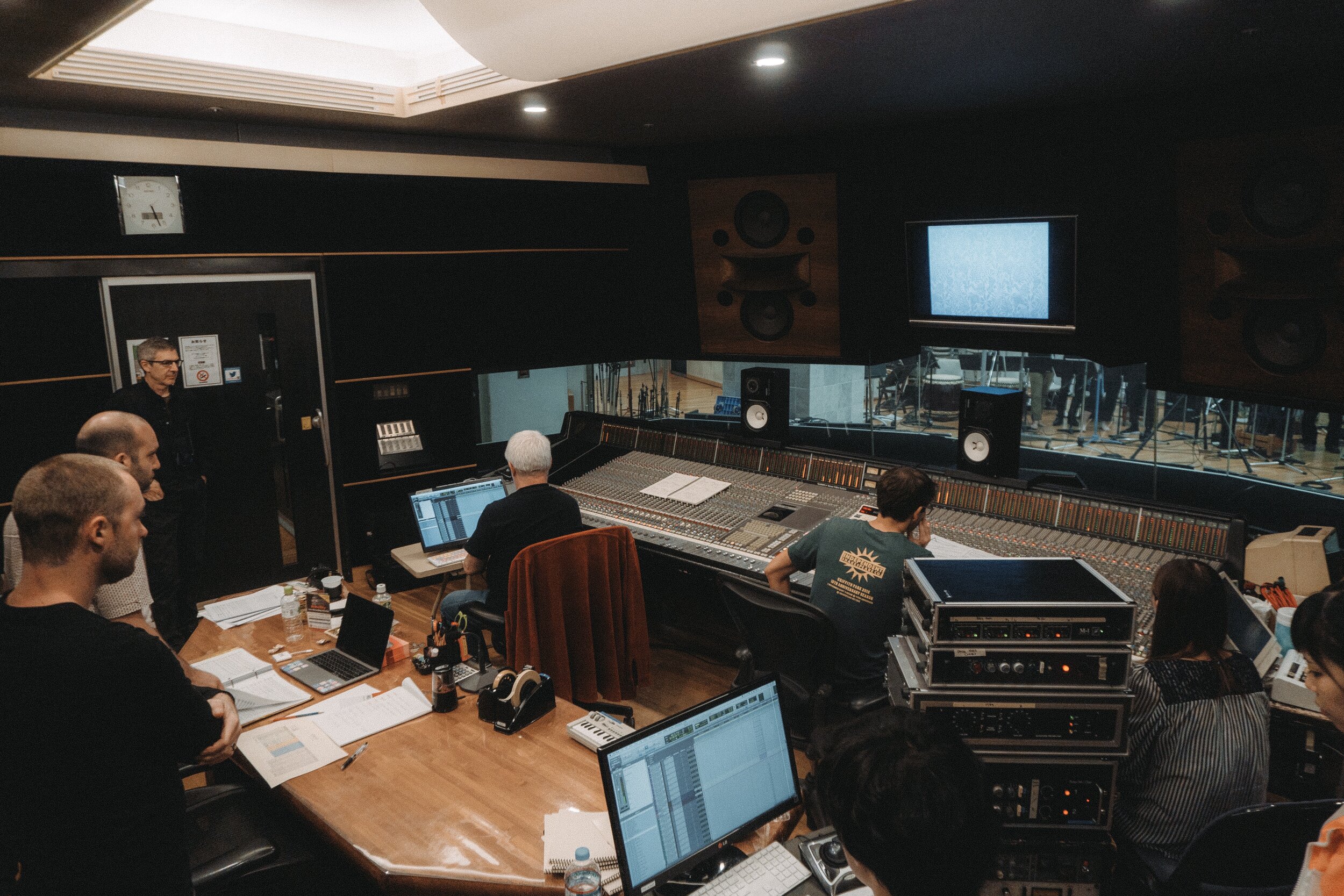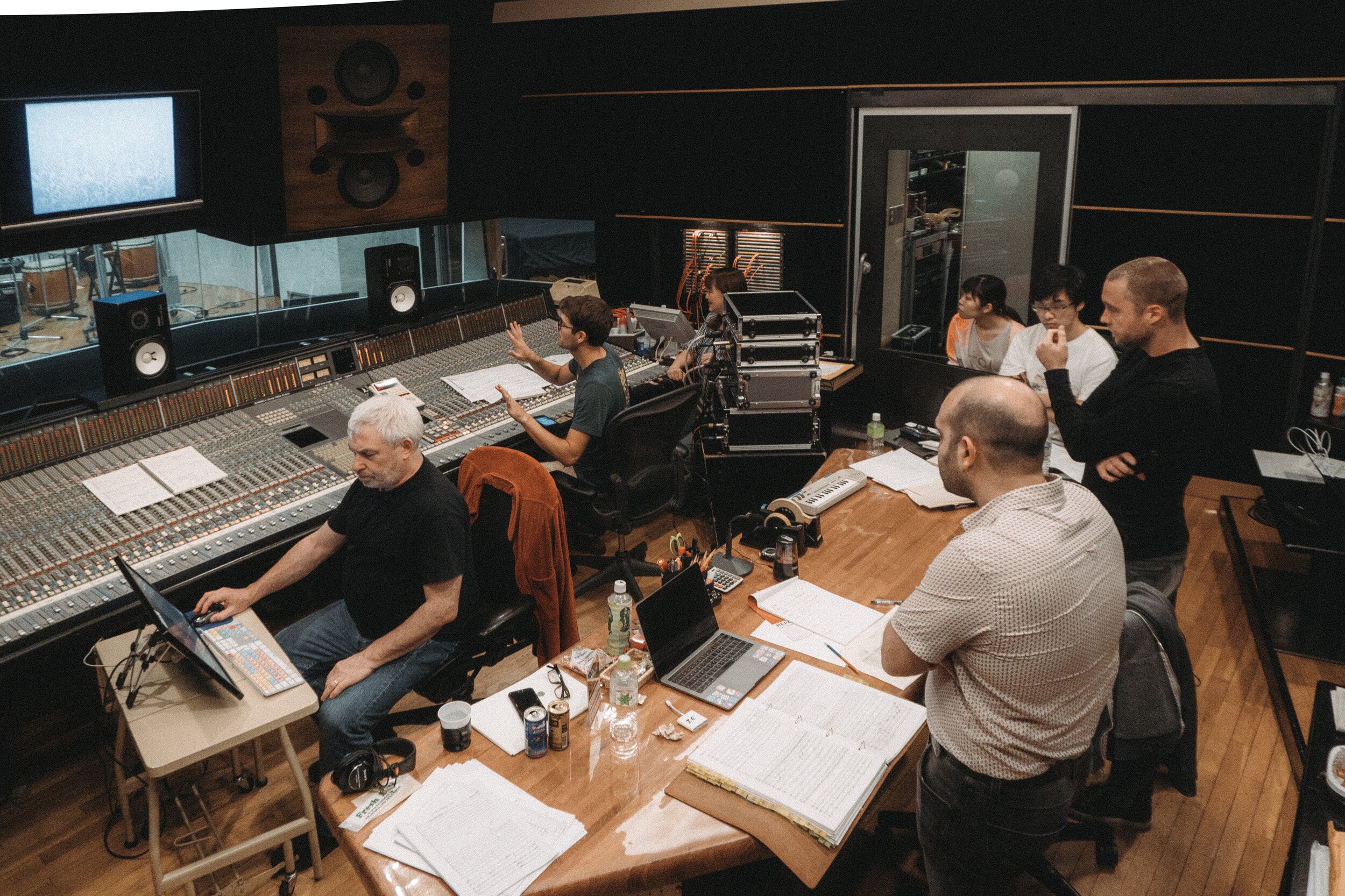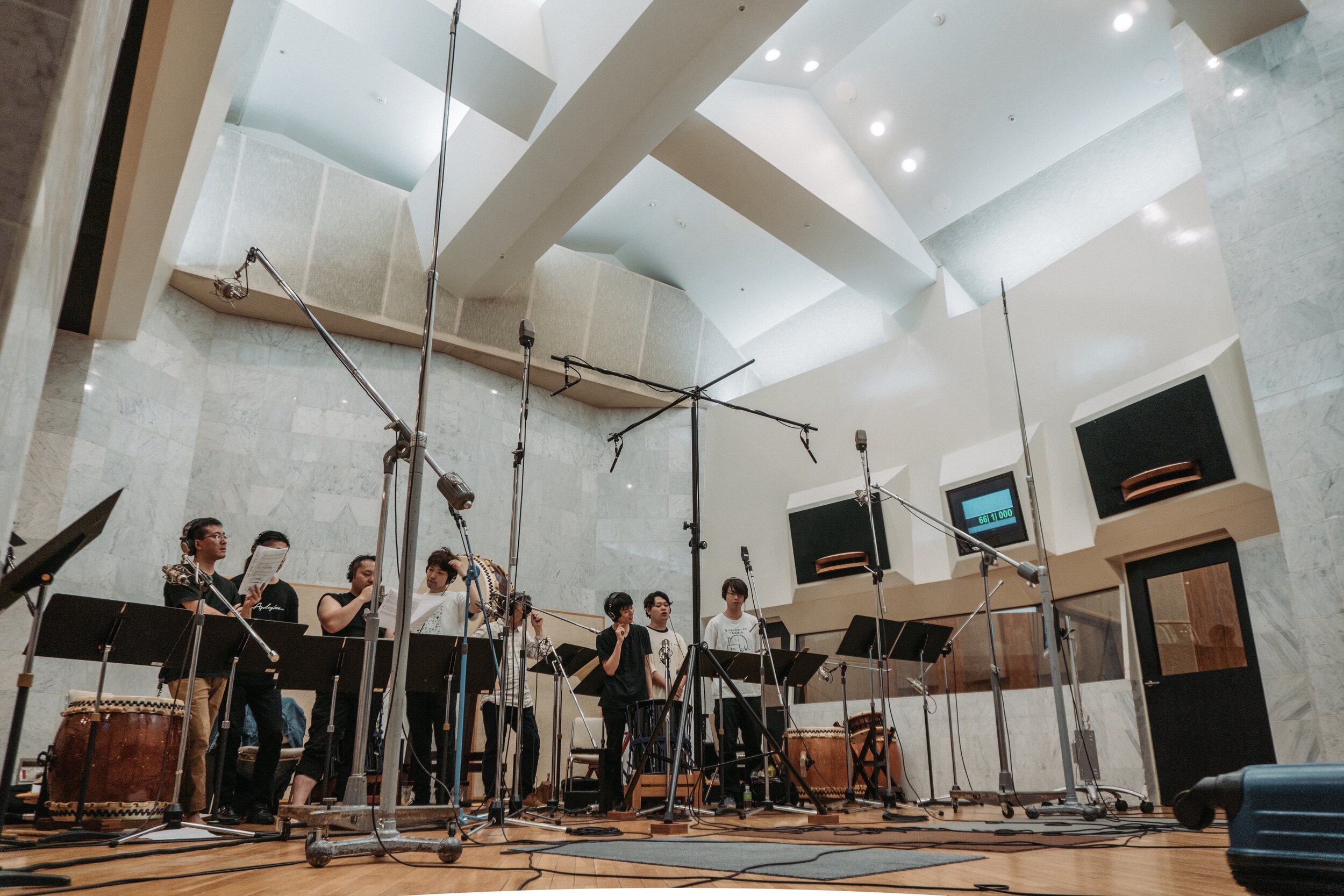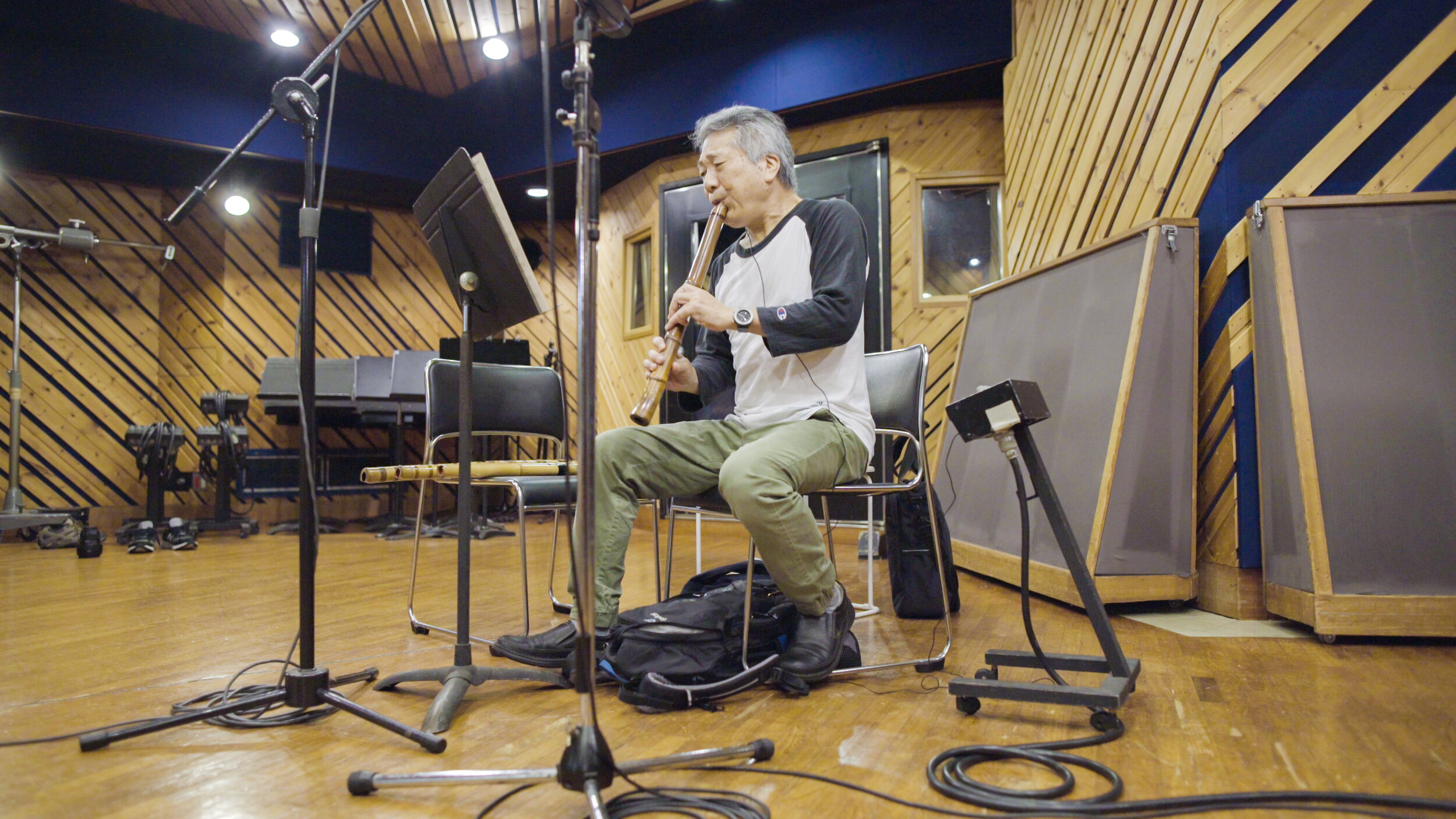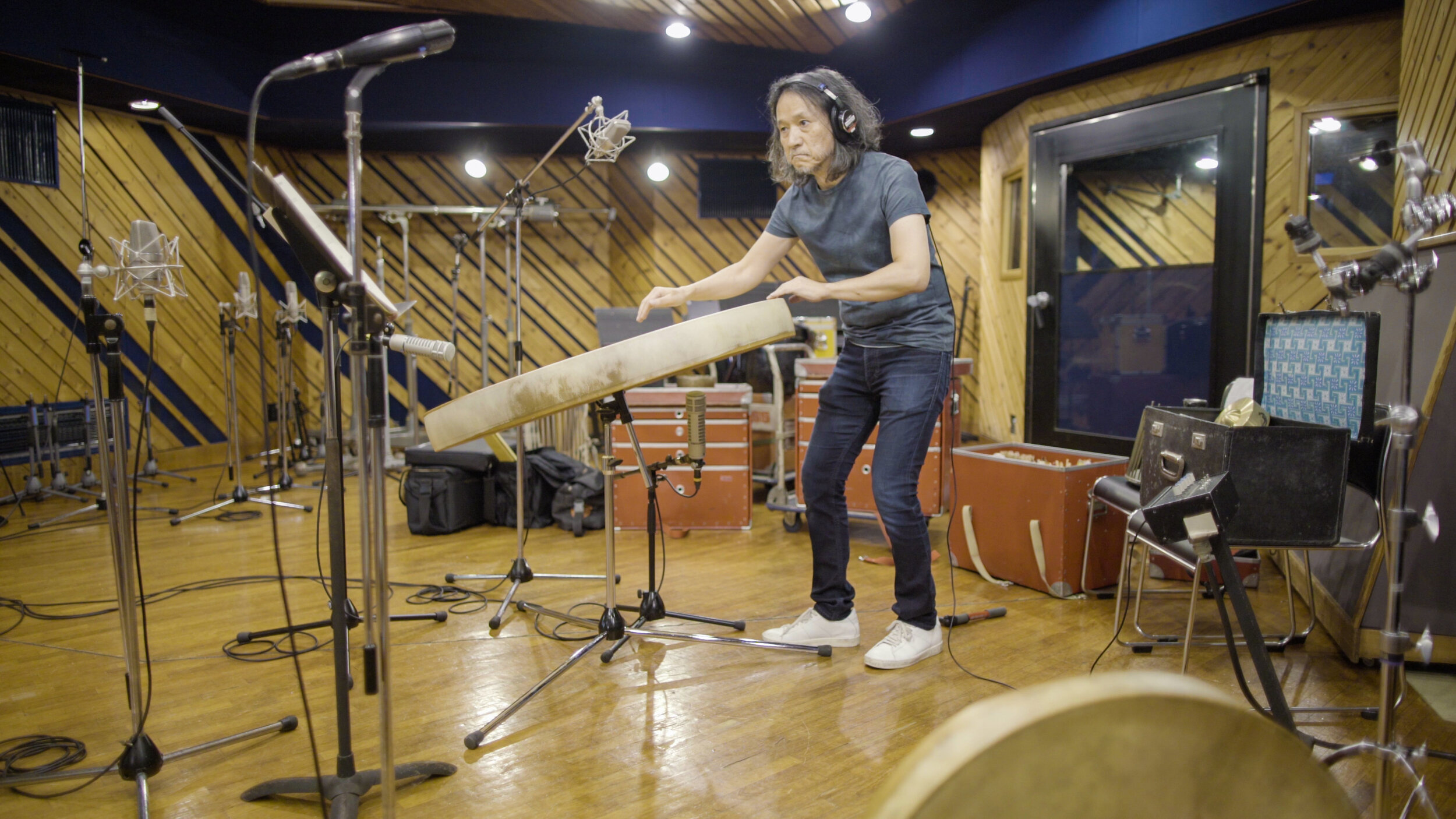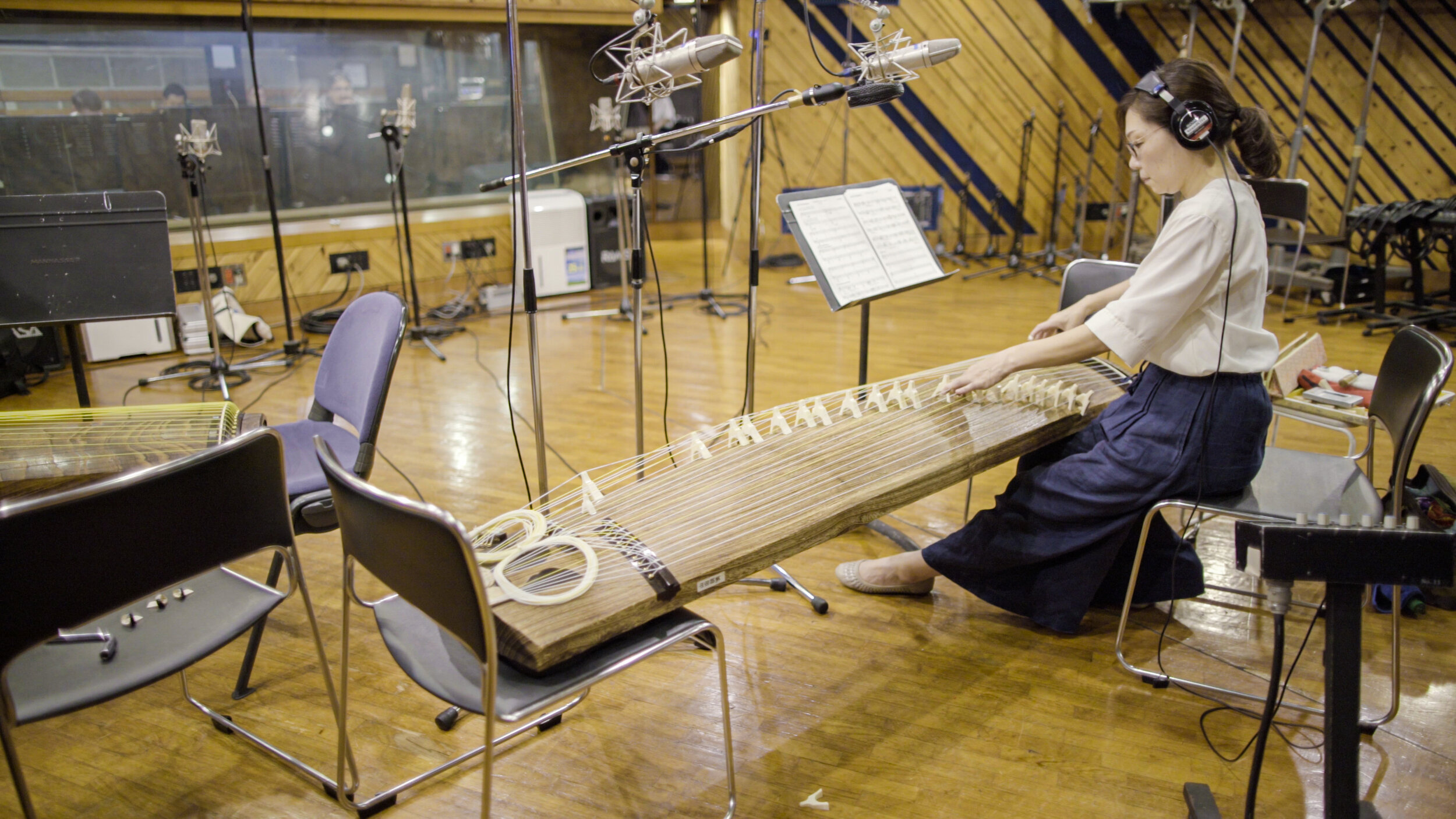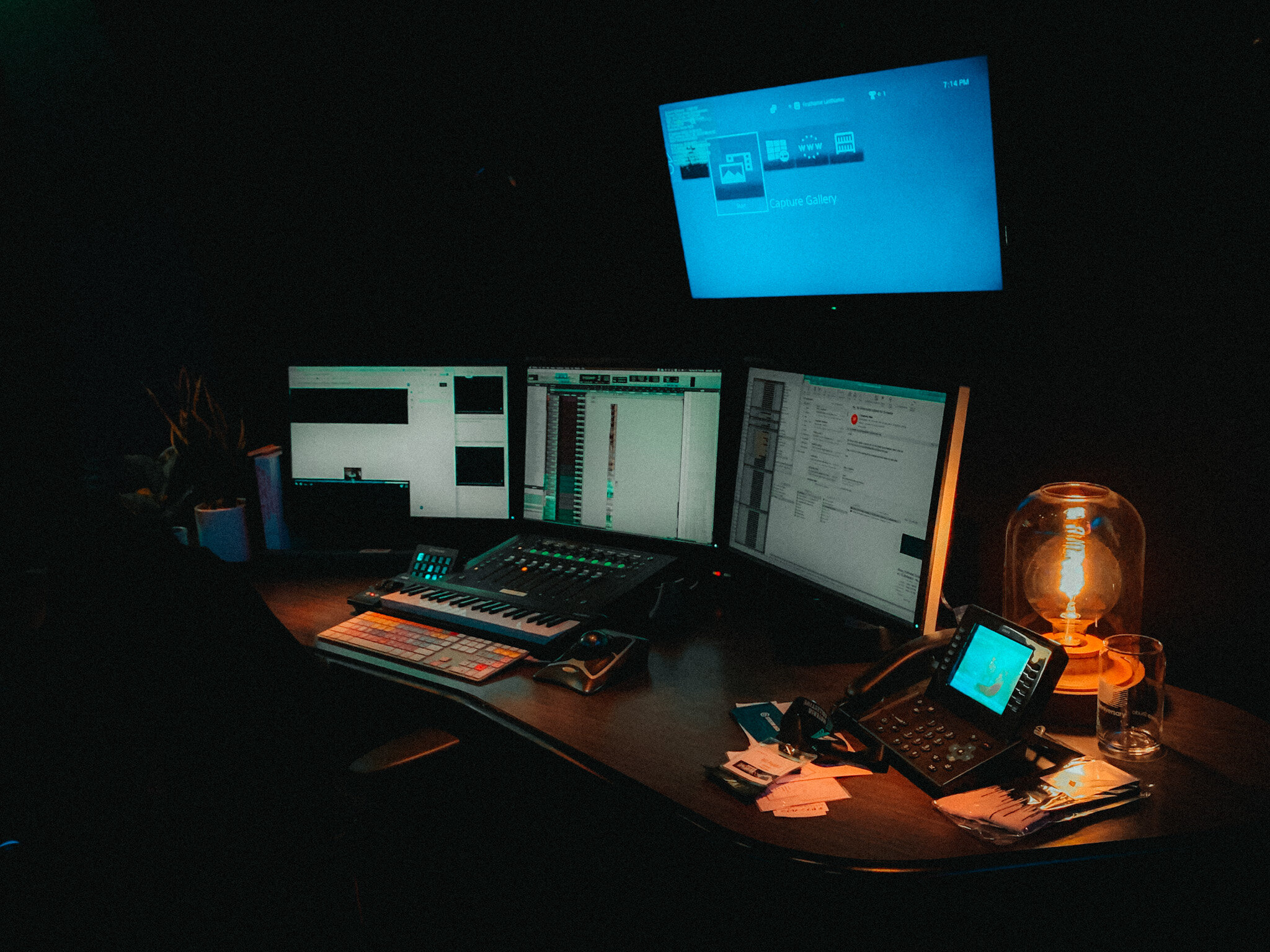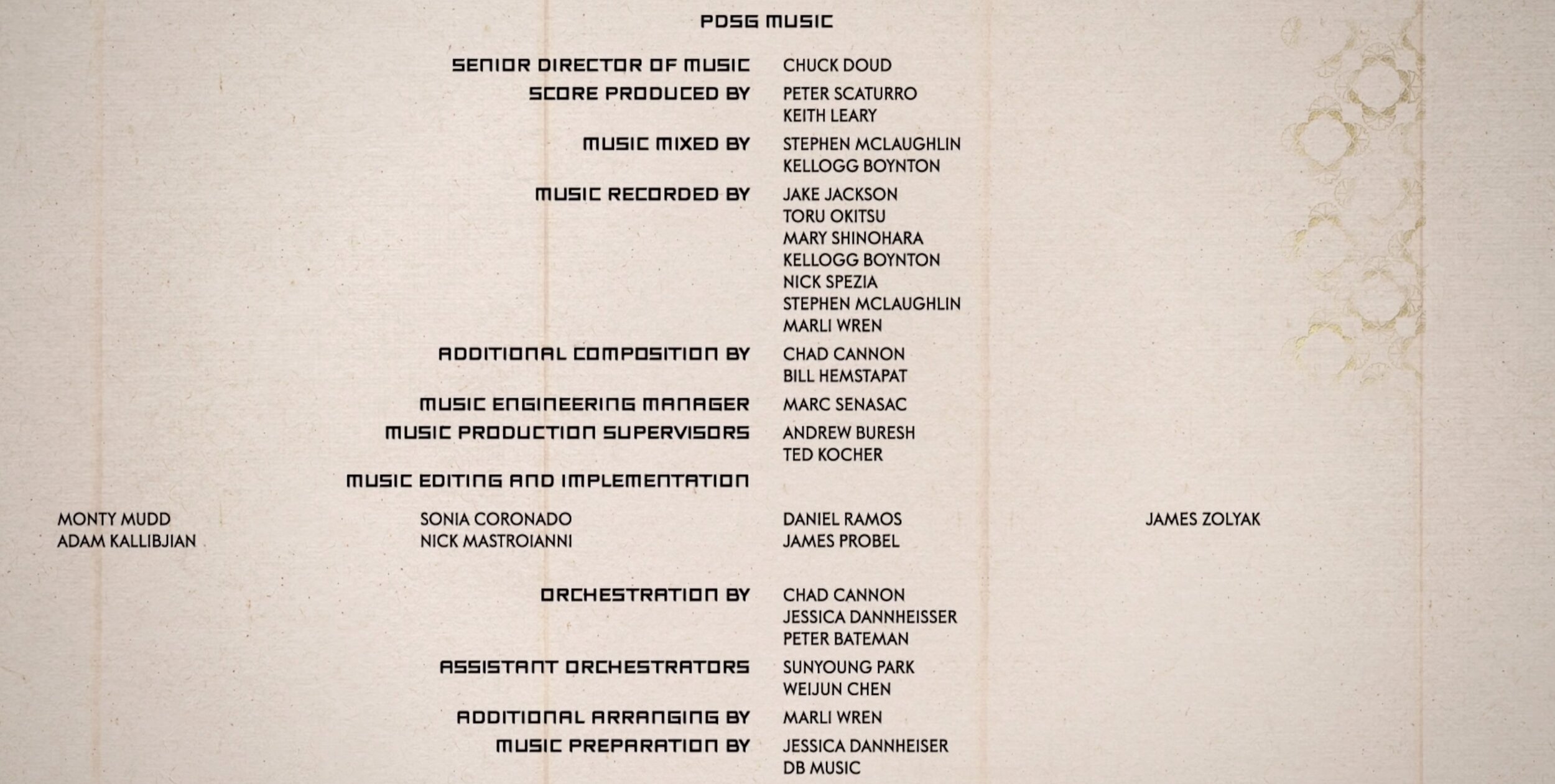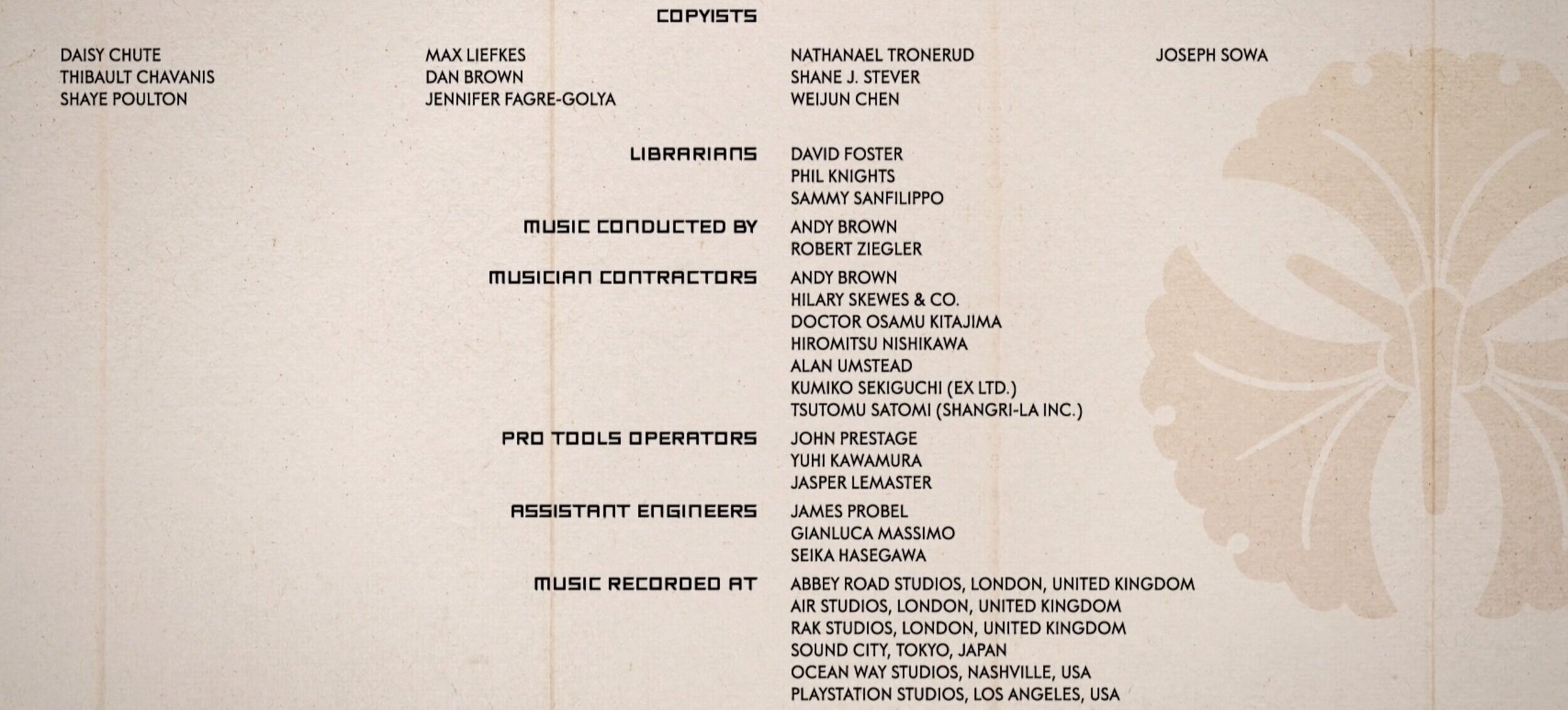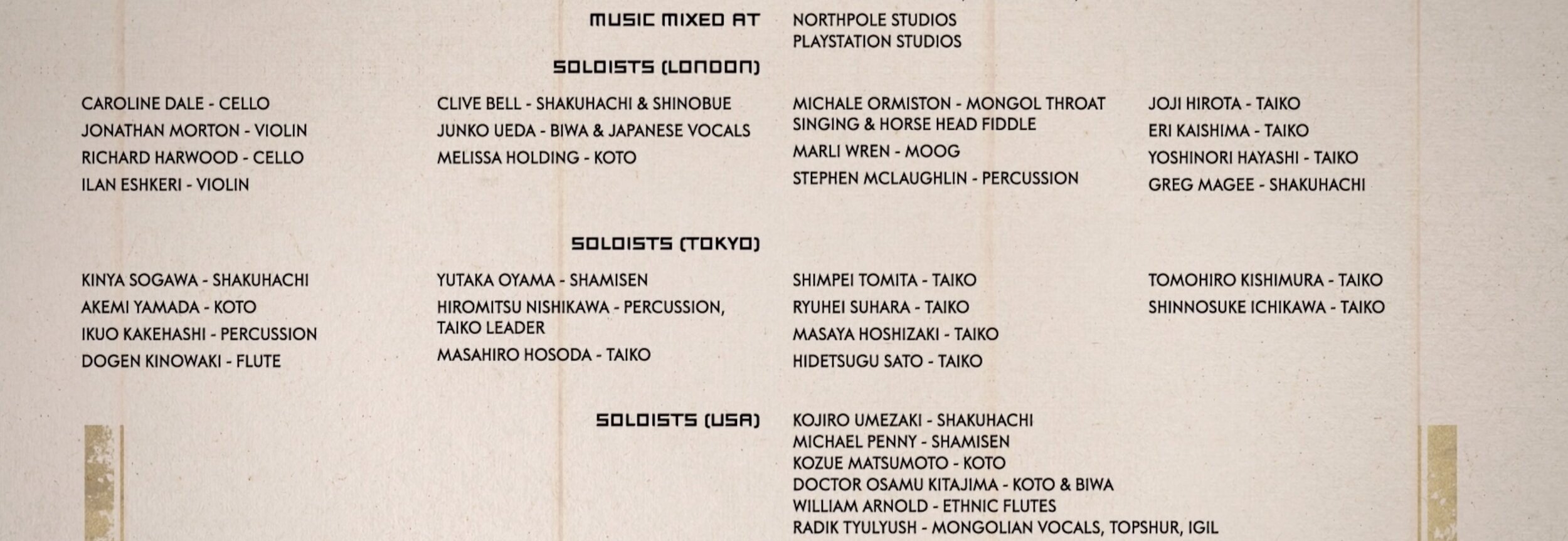Bill Hemstapat
Composer | Music Designer
THE Arranger’s diary: Ghost of Tsushima
Ghost of Tsushima is finally released! As a music arranger on this project, I’d like to congratulate composers Ilan Eshkeri and Shigeru “Ume” Umebayashi on a great score. I’d also like to congratulate all of my music department colleagues at Sony on another successful job, which would never have been achieved without everybody’s hard work.
I’m writing this blog in hopes to take you on a trip down my personal memory lane of this incredibly long journey. Where do I even start? From an E3 showcase in June 2018 through to the release date of July 17th 2020 - A LOT has happened. I went from being a freelancer to working as an in-house contractor for Sony’s music department. We survived one of the largest Typhoons to have ever hit Tokyo. COVID-19 and the global pandemic happened. A few people have even had their first child along the way.
Ghost of Tsushima has been one of the most beautiful, unique, challenging, rewarding, and musically satisfying project in my career so far. I was extremely fortunate to have been a part of almost every aspect of the music team from providing additional music to arranging to music editing, to implementation design.
I guess I will just go from the very beginning to the end. Buckle up, it’s going to be a long one!
chapter 1 - E3 2018
May, 2018
This is the beginning of it all for me. I was in the middle of applying for my O-1B U.S. visa (colloquially called “The Artist Visa”). Peter Scaturro, who is Sony PlayStation’s music department senior producer, was helping me with a recommendation letter. I worked with Pete on God of War and Days Gone on my first stint as a music editor at PlayStation before leaving to pursue my own composing career. It was very kind of him to help me out.
We were having a phone call discussing some logistics on the recommendation letter, which I won’t go in details about, but towards the end of the call, he asked me something along the line of “What does your work schedule look like? We may have a something you could help us out with”.
My eyes lit up at this point. Pete told me that there’s an E3 showcase coming up and the music department is super busy gearing up for a few games that will have a big presentation that year. (Most notably The Last of Us 2, Death Stranding, Spiderman, and Bioware’s Anthem). He further explained that the composer for the game, Shigeru Umebayashi (who I will now refer to as “Ume” for the rest of the blog), had written some music already. But they needed somebody to help arrange the material to fit the specific gamepley that was to be shown at E3.
The real highlight came when Pete said “We booked a studio and the orchestra in Nashville on May 21st, do you think you could get it done by then?” That call was on May 16th, 2018. This meant that I would have had roughly only 3-4 days to work on it. I accepted the challenge and delightfully replied “Yes, please send me the material and I will get to it right away!”
Ghost of Tsushima’s E3 2018 showcase
The session went great with myself remoting in from Los Angeles while Pete was in Nashville. Ume was happy with the arrangement. The music got mixed and implemented into the game a few days later. It’s worth mentioning that it was at this point that my path crossed with Andrew Buresh, who is the music lead on this project. I knew Andrew briefly while working in-house, but at this point we hadn’t officially worked together before.
Sony’s E3 showcase was held on Jun 11th, 2018 in Los Angeles. It was a very successful show leaving the audience super excited for the game. This was the first time the public was able to see the gameplay of Ghost of Tsushima. I was very grateful to have gotten to be a part of it. Pete and I both said our thanks and that marked the end of my involvement UNTIL…….
Chapter 2 - Tsushima Suites
June - August, 2019
June 2019 was when I worked on Hideo Kojima’s Death Stranding. I was brought back to PlayStation’s in-house music team on a short contract to help with the last leg of music editing - particularly on the cinematics which Death Stranding has plenty of.
It was also at this point that I heard about Ilan Eshkeri’s involvement for the first time. They had their first recording session at Abbey Road Studios in London around this time in 2019 for the first batch of cues. While being quite different from Ume, the music really sounded amazing. From a brief observation, Ilan brought a different sense of emotional depth and sophistication to the characters in the game. It had been a year since I had heard anything about Ghost (since E3 2018), so it was refreshing to hear the progress that the composers had made over the months.
First arrangement demo
During that time, while I didn’t work directly with Pete, I saw him pretty much everyday at the office. We chatted and exchanged conversations as we occasionally ran into each other in the hallway. I sometimes would ask how everything was going with Ghost. Pete shared that Ume was working on “a 45 minutes long big abstract composition with 5 movements” that would draw inspiration from the story of Ghost of Tsushima and its landscape. The piece would then be the anchor for the sonic landscape for Ghost of Tsushima and that a guy named Chad Cannon was going to handle the arrangement and orchestration.
Between all of that, Pete mentioned a need to have a proof of concept for what Ume’s themes and compositional ideas would sound like arranged and orchestrated. Without expecting anything, I volunteered to put a mockup together for him using samples. Since I had already sort of done that for E3 anyway, it couldn’t be that hard right? I came back to my home studio and started putting something together and sent it off. Pete liked the arrangement and thanked me for it.
I then shifted my focus back to the task at hand, which was Death Stranding.
The Call Back
After I finished the Death Stranding job in July, things got quite quiet for a while - for me at least. August came around and while I was out having hot-pot dinner with a friend after a soccer game, I got a call with a familiar voice at the other end.
“Hey Bill, it’s Pete. What are you doing tomorrow night?”
“Hmmm, nothing really why?” I replied back.
“Well, we’re having dinner with a guy named Dr. Osamu Kitajima along with Chad Cannon and Andrew Buresh, I was wondering if you could like to come?”
said Pete mysteriously…
“Is this a work thing or a casual thing? Either way, sure! Text me the address and I will see you there”
To be honest, I couldn’t remember how it exactly went down. But that was just my interpretation of how that conversation went. With all the names involved, I did imagine that this was going to be about Ghost. We met at a restaurant in Sherman Oaks. Andrew and I were introduced to Chad and Dr. Kitajima (who goes by “Doc”) for the first time. Being active in the film and TV scene in LA, I had heard Chad’s work on the film Paper Lanterns before and I knew that he was a prolific arranger having worked with a master like Joe Hisaishi out of all people. However, I hadn’t heard of the name Osamu Kitajima before. Hmm, who could he be?
It turns out that he’s a Japanese musicology expert and a multi-instrumentalist (koto and biwa being some of the instruments he plays). He is deeply familiar with a traditional Japanese music scene both in Los Angeles and Tokyo. “Doc” would be the point person in contracting traditional Japanese musicians in Tokyo for Ghost.
It was here that Pete started to reveal his plan to us. Chad and I would be arranging and orchestrating Ume’s music. The orchestra and a few other elements would be recorded in London. We would be recording a Taiko ensemble in Tokyo with musicians contracted by Doc. Along with that, Ume had handpicked a few musicians to be featured in his score which we would also be recording.
————————
Arrangements underway
The majority of Tsushima Suites arrangements were done at my studio in Los Angeles, California.
How excited was I? Super! Not only because I would get to work on this incredibly unique game, but also because I would get to work with a prolific composers like Ume and Chad. Not to mention a large amount of musicians! I was so excited that I started to learn Japanese with my friend, Wataru Niimori, with the hopes that it would become useful throughout the project. It’s also worth mentioning that before I became a composer, I was a flute player. So with that in mind, I started to collect some Japanese flutes like Shakuhachi, Shinobue, and Nokhan and I started learning to play them and practiced over this period of time.
It took us around 2 months to completely arrange and orchestrate Ume’s Tsushima Suite. The music was now prepped and ready to be printed and taped at the other side of the world waiting to be played by some of the best musicians in the world. All the travel plans were finalized, flights and hotels were booked, and bags were packed.
———————
And off we went traveling the world!
CHAPTER 3 - London
September, 2019
Conductor Robert Ziegler (on the podium) introducing composer Shigeru Umebayashi, score producer Peter Scaturro (dark blue shirt), myself, Chad, and our contractor Jenny Plant (the very same Jenny Plant that sung BB’s theme on Death Stranding!)
And let the recording of Tsushima Suite begin! We started with a great orchestra put together by Hilary Skews & Co. We chose AIR Studios, with an antiphonal seating arrangement for strings. Many PlayStation titles have recorded their music here, so the crew was very familiar with our workflow as well as our recording specs. Robert Ziegler was our conductor with Jonathan Morton as a concertmaster. Jake Jackson led the engineering team at AIR with John Prestage as a Protools operator and Gianluca Massimo as an assistant engineer.
Jake had actually worked with Ume a few times when Ume recorded his film scores in London in the past, so they were already very familiar with each other. However, this was my first time meeting Ume in person! Ume, Sony team, myself, and Kumi (Ume’s manager) went out for dinner the night before the session to get to know each other a little more. Ume was a very sweet and charming gentleman with more smiles on his face than I had imagined. After many sake drinks, we embraced each other at the end of the night wishing ourselves for the best sessions.
With our experience and familiarity with running sessions in English, the session was led by myself and Chad. Oh! Have I mentioned that Chad is FLUENT in Japanese? He actually spent 3-4 years living in Fukuoka and continued to work with many Japanese people ever since. So Chad was consistently listening and translating Ume’s opinion to the conductor. It was around here that I got to experience his fluency in Japanese which was very impressive to see! As for me, I was looking out for a general performance tweaks as well as looking out for opportunities to split parts, record alternative takes, and anything that could benefit the editing team when they would have to generate more content from these pieces in the future.
Strings took about a day and a half to record with the brass section taking another day. We also had some time to record solo cello with Richard Harwood as well as some timpani with Joby Burgess.
Taiko Ensemble with Joji Hirota
After we recorded the orchestra in the Lyndhurst Hall (the biggest room at AIR Studios), next up was the taiko ensemble in Studio 1. The taiko “trio” was led by a London based Japanese taiko expert Joji Hirota. Joji is an extremely versatile taiko drummer and percussionist with a deep knowledge in taiko music both in an authentic traditional sense as well as its application to contemporary music. It’s worth noting that he was a huge contributor on Alexandre Desplat’s score, Isle of Dogs which was also recorded here at AIR Studios.
With all Japanese drummer line up of Joji, Eri Kaishima, and Yoshinori Hayashi, the session was now being run in Japanese with Ume and Chad leading the charge. Chad was also on translation duty to help us and the engineers keep up with the conversations.
The drums were split into three rows of simple high, mid, and low.
High = Shime-daiko
Mid = Miya-daiko
Low = Big O-daiko in the center with larger Hira-daiko on the 2 flanks.
The materials were arranged so that the taiko drummers would play a take on all the low drums first, then overdubbing the mid and high drum parts respectively. This effectively created a 9 player ensemble sound while providing flexibility for editorial reasons where the parts could be split after the fact. We also recorded some alternate takes with just Joji himself riffing and improvising on a given groove. This provided more nuance to the recording as well as additional material for future arrangements.
A lot going on here…. In the front: AIR engineers Jake Jackson, John Prestage along with Sony’s in house engineer Kellogg Boynton setting up for Taiko recording . In the back: Ume, Chad, and Joji discussing musical approaches.
And The LONDON recordings are concluded for Ume!
I also forgot to mention that the other part of the score, which was composed by Ilan Eshkeri, was also being recorded in the same week at the famous Abbey Road studios with a different orchestra. Keith Leary, another Sony score producer was out at Abbey Road producing Ilan’s portion of the score. This was the first time that Playstation had two big orchestral sessions running in parallel at two famous scoring stages in London!
It had been a very exhausting six days of recording. Let’s end this chapter with a few casual pictures of us hanging out in Chinatown London and finally having our dinner at 10pm after a 12 hour session day. Chad and I also did not forget to snap a few candids with Ume-sensei himself!
After many jet-lagged complains and many cappuccinos later, we were ready to fly back to our home base in Los Angeles and get ready for the next very exciting chapter in the score production: Tokyo.
chapter 4 - Tokyo
Early October, 2019
I’ve always wanted to go to Japan. Growing up in Thailand, we look up to Japanese people as the best of our kind. We use their products, consume their media, eat their food, are inspired by their inventions and adore their cultural preservation.
When I was younger, my dad actually took Japanese lessons hoping to take me and my mom to see Mt. Fuji on a trip. That ended up falling through due to his commitment with the job he had at that time. Ever since, I’ve transferred flights in Japan many times when traveling back and forth from the US and Thailand and all I could do was look out the window from the terminal wondering when the time would be that I could finally get to experience their culture?
With that, who would have thought that “my first time” would be a work trip brought to me by my musical career?
Through a completely twisted chain of events that got me involved in Ghost of Tsushima, I was now sitting in terminal B at Los Angeles airport, wondering how I got here waiting for a flight to Haneda airport, Tokyo - extremely excited.
Day 1 - Ilan and the Taiko ensemble
I was actually the last member of the team to arrive in Tokyo on a Tuesday afternoon. Pete, Kellogg, Chad, Ilan and his engineer Steve McLaughlin had already been recording since Monday of that week.
I arrived at our hotel in Shibuya around 3pm of Tuesday and immediately raced to Sound City Studio 1 where Ilan was recording a Taiko ensemble for his portion of the score. In true foreigner/first-timer fashion, I got lost for a while not knowing that the studio was located underground (you have to take the elevator down). I finally made it to the studio around 4:30pm, just in time for the last half hour of recording!
The session went great and everybody had a lot of fun playing/recording the music. The Taiko group sounded really good and was very fitting with Ilan’s music while sounding very different from the Joji Hirata’s Taiko trio we previously recorded in London.
Chad was acting as an anchor for everybody; translating/interpreting English to Japanese and vice versa between Ilan/Steve and the Taiko ensemble as well as all our crew from America and the engineering team at Sound City. At one point, he was translating 3-4 conversations all at once, it’s quite incredible!
In the mean time, Kellogg had his own strategy using an iPhone fully equipped with Google Translate to communicate with the Protools operator, Yuhi Kawamura and assistant engineer Seika Hasegawa.
One interesting detail that I found was that while Chad is fluent in Japanese, there were some music-specific words he had picked up from Mary Yoshinora, who was our lead coordinating engineer for all Tokyo sessions. They ended up writing them down on these small pieces of tape which ended up on the console (and later Chad himself…) as pictured.
day 2 - Ume’s Taiko and Shamisen
After spectating Ilan on Tuesday, we now moved on to record more Taikos for Ume’s portion of the score. The goal here was to overdub some of the sections we already recorded in London with a fuller “ensemble sound”. The ensemble was led by Hiromitsu Nishikawa, who’s a great friend of Dr. Osamu Kitajima. The group had a great understanding between each other. There was this collective respect and almost a master/apprentice relationship between all of the players and Nishikawa-sensei and you could tell that they often play together in some degree or another. Doc Kitajima further elaborated that while they are all out having a career of their own, these players were all Nishikawa-sensei’s students at some point in their life.
The session was again led by our ambassador Chad Cannon with me whispering my comments to him in the back. Since Ume’s Tsushima Suite was written and arranged as a multi-purpose scoring piece, my job here was to make sure that all the layers from both London and Tokyo sessions were recorded in such a way that they could be pulled apart later. This entails recording different stick techniques/types, alternate rhythms as well as separating a few rhythmic passages in different passes. What this will allow in editorial is freedom to use these individual parts almost as standalone pre-recorded “loops” to build even more music to cover the entire gameplay experience.
Fun fact, I was able to test out a few Japanese phrases I had been learning up until this point. I can’t tell you how immensely satisfying it was to say “コーヒーはありますか” (kohi wa arimasu ka) and ask for a cup for coffee in Japanese for the first time in my life!
On the same day in the afternoon, we moved on to record shamisen with Yutaka Oyama. Aside from playing the parts brilliantly, I proposed the idea of having him improvise freely using a few different guiding emotions. Chad helped me out a lot with translating my thoughts, but we ended up with the “Oyama shamisen toolkit” which would be extremely useful, again, for generating extra in-game content in the future.
Taiko ensemble at Sound City Studios, Tokyo
Posing with Chad, Pete with Hiromitsu Nishikawa and the rest of the taiko ensemble.
Chad, Myself, Ume, Pete, Kellogg with our shamisen player Yutaka Oyama.
Day 3&4 - Koto, Percussion, and Shakuhachi
Interestingly enough, this is where the recordings got smaller and smaller, but the differences were bigger! Koto and Shakuhachi are two of the most prominent instruments for Ghost of Tsushima. While an instrument like shamisen is considered a newer instrument inspired by the Chinese culture in the 16th century, Koto and Shakuhachi, on the other hand, have been a part of Japanese culture for a long time. Ume had written a lot of great melodies and picked his own musicians to execute those parts. There players were Kinya Sogawa on Shakuhachi/Shinobue and Akemi Yamada on Koto/Bass Koto.
These smaller sessions were held at Sound City Annex, a smaller studio not very far from Tokyo Tower with Ume’s long time collaborator, Toru Okitsu as a lead engineer. Mary, Yuhi, and Seika were still present for these sessions. Both Sogawa-sensei and Yamada-san demonstrated full mastery of their respective instruments leaving everybody in awe.
In my opinion Sogawa-sensei in particular brought a very deep spiritual sense of Japanese culture and provided a different level of depth to the music. He communicated a wide range of emotions through his Shakuhachi at the level that I’ve never heard before in my life. His performances can be heard through out Tsushima Suite.
Another highlight was a percussionist, another one of Ume’s long time collaborators, Ikuo Kakehashi. We recorded one of the biggest framedrums I had ever witnessed and we experimented with many other combinations of sounds that further painted this unique musical world of Ghost of Tsushima. Fun fact, Kakehashi-san is the son of Ikutaro Kakehashi, founder of the Japanese music giant, Roland.
All the sessions went extremely well. We were over the moon with the results. I personally thanked Ume and Chad for this once in a life time collaboration and asked if I could get their signatures on the front page of my score along with everybody else’s as a memory. They gladly did so as we drank our celebratory sake before Ume said his goodbye and left the studio.
We also did not forget to thank our engineers who worked tirelessly for our last 5 days. I wished everybody safe travels home as they wished us good luck on the rest of the project. We did not forget to exchange our business cards as well as snapping a few pics together!
The score I had been using for the last month of recording up to this point, signed by everybody in the control room.
From left to right: Yuhi, Kellogg, me, and Mary
Koto music book with all my markings on it.
surviving Typhoon Hagibis and a bad flu
Dark and cloudy sky covering Tokyo tower the night before the typhoon.
One of the phrases used a lot in Ghost of Tsushima’s promotional campaign was “the storm is coming”. And well, the storm did come for us. After we landed in Tokyo, we had been receiving news all week that one of the biggest typhoons would be hitting Tokyo on Friday of that week, which happened to be the last day of our recording. We started seeing heavy rain after getting out of our last studio session with Yamada-san around 9pm of Friday. The rain kept intensifying while our flights that were suppose to leave the next day were already canceled.
After many calls back and forth with Sony’s music team and the travel agency, we had to extend our stay in Tokyo for two and a half days, hoping to catch a Monday afternoon flight. Fortunately, we were able to stay at a very safe hotel that kept us inside and provided food and services. We got out of Tokyo safely and caught a flight from Haneda to LAX on Monday afternoon as planned.
However, another problem came up when I got back to the US with a really bad flu. It was one of the most painful 10 hour plane ride I had ever experienced - I had a really high fever and headache the entire flight. I suspected that the intense traveling in my recent months (crossing 3 different timezones and not sleeping nearly enough) had really caught up to me this time.
The flu landed me in bed for 3 days forcing me to miss another meeting with the team. I mean, it wasn’t going to be possible to take another plane out to San Francisco and back let alone being in an intellectually demanding meeting.
Thankfully, everybody understood and wished me a speedy recovery while I caught up on all of the sleep…
Chapter 5 - coming home
Late October, 2019
While we were in London, Pete asked me if I’d be interested in coming back to work in the office with the music department. With my deep familiarity of the score and experience doing music edits and implementation design for PlayStation past projects, he thought I’d be a great help to the team. Without any hesitation, I said yes.
Usually, after the composer has finished writing and recording all the music, their job is done. It would then be passed along to the in-house music team to be edited and implemented in-game. That process can be quite lengthy depending on the game. The job here is to keep the intent and integrity of what the composer wrote in the form of interactive music.
I setup a mission for myself to be the “missing bridge” hoping to see Ume’s music through to the end. That mission entails bringing his vision and our arrangements of the Tsushima Suites into editorial and making sure that it’s being enhanced by the implementation in-game.
This marks the start of another 7 months journey with me back “home” at PlayStation.
My desk at Sony Playstation, Playa Vista office.
The Game Awards trailer reveal
December 12th, 2019
At The Game Awards 2019, Ghost of Tsushima’s trailer premiered for the first time. This was so far only the third showing of the game, the first time being the reveal teaser (premiered at Paris Games Week) and the second time being the E3 2018 showcase in Los Angeles. So this was a BIG DEAL. Geoff Keighley, the organizer of the show, ended up putting this trailer at the very end of the show and topped it off with a live orchestra performance on the second half of the trailer.
This was an interesting point in the project where the music by both Ilan and Ume, in their final form, were being presented to the world for the first time. Of course, nobody really had any idea about this since both composers had not been officially announced by this point.
Even though we were not directly responsible for preparing the performance, we couldn’t help but feeling extremely excited that the world was getting to hear the score of Ghost of Tsushima for the first time. So….. we threw a cute little watch party together.
This seems like a good chance for me to introduce some of our team members from down here in Playa Vista office (at Santa Monica Studio).
Left to right: Kellogg Boynton (engineer), Sonia Coronado (music editor), James Probel (assistant engineer), Adam Kallibjian (music editor)
Far left: Vanessa Zamora (music licensing coordinator), Far right: Justin Fields (music affairs specialist)
Chapter 6 - Music Editing and Implementation
November, 2019 - April, 2020
Now that the music was fully composed and recorded it was just a matter of putting it in the game right? Well…yes, but there’s so much to that process that it’s usually the longest and most labor intensive and time consuming. Imagine that the composers collectively wrote about 2-3 hours worth of music. How do we turn that into a 15-20 hours experience without repeating the same piece of music over and over again? It’s through the clever re-arrangement and music editing that I’ve been talking about!
Here are a few key areas in scoring the gameplay of Ghost of Tsushima.
Narrative Cinematic Music
Narrative Gameplay Music
Dynamically Scalable Combat Music System
Open World Explore Music
Optional Quests and Miscellaneous Mechanics
While I would like to keep this blog personal without going into too many nerdy details, let me explain each of these areas briefly to give you an idea of how much work this was!
A State of Play presentation showing different aspects of gameplay. This the first time the public gets to see an in-depth look of the game’s mechanics.
Narrative Cinematic Music
This is quite self-explanatory. It’s the music that’s playing during the cut-scenes. Some of these have been scored by Ilan. But a lot of them have to be put together from scratch by re-arranging some of the materials from the composers. There are more than 150 total cut-scenes both from the main story and optional quests.
Narrative Gameplay Music
These are moments where an important part of the story is being told through gameplay. This includes conversations while traversing, duels, and big set piece events like when you defend Yarikawa.
Dynamically Scalable Combat Music System
There are MANY combat scenarios in this game. Unless it’s being handled as an important gameplay music like mentioned above, the music for those fights will be handled by these “combat music systems”. The gist of it is that it’s a system that’s able to systematically adapt to different states that the player is in (explore, stealth, combat, etc.) as well as scaling the arrangement of the music depending on how hard/easy the combat scenarios are. Andrew Buresh along with Monty Mudd and Nick Mastroianni were extremely instrumental in designing and implementing this system.
Open World Explore Music
Sucker Punch has always wanted players to get lost in the world that they build. For that sense of complete immersion, we needed to create a non-intrusive playlist of music that blends in with nature while providing a sense of Japanese Samurai fantasy. Musically it needs to provide some sort tranquility and serenity of the beautiful Tsushima island. Mechanically, the goal was that if you’re standing still for hours, you would never get tired of hearing the sound of the environment and the music weaving in and out of each other.
The result is a play of over 100 short musical ambience that play randomly with spaces in between. They come and go much like a natural breeze or bird flying over your head - mimicking the movement of nature. It took us over a month to fully solidify this idea, execute it through editorial, and implement it in-game.
Optional Quests and Miscellaneous Mechanics
There are many side quests and optional interests that populate the world of Ghost. With total of more than 60 side quests (including the longer form mythic quests) and mechanics like the shrine, haiku, hot springs, etc., this took over 2 months to arrange, edit, implement and test the music with Adam Kallibjian, Sonia Coronado, and James Probel leading charge on these.
An example of an in-game arrangement utilizing Kodoku from Tsushima Suite for the Tengu Demon boss fight in a Mythic Tales mission
Another unique in-game arrangements for a duel with Ryuzo infusing both Ilan’s and Ume’s musical materials together
The PD music whiteboard
A very raw picture of this giant whiteboard our team uses during the last push for the game. Obviously, some people have been enjoying some non-work related scribbling here…
With so much going on, there was obviously a lot of organizational methods that were being used like JIRA or google doc. Even though these are great, I felt like all of those things only live on the computer and I was craving something big that would take up physical space so that when people walked by they could get a gentle reminder and quickly see our progress.
So one day I went to the facility guys and asked if we could have a big whiteboard dedicated for us. And I kid you not - it made all the difference. This whiteboard became one of the most important gathering places for our team to have big picture discussions as well as where all of our standup meetings were held. It also provided the satisfaction of physically checking something off the list for those who had completed a certain task.
Thanks again to the facility guys for helping us out!
Additional Soloists recording
With all of the above in mind, our team realized that the game is much bigger than we anticipated and that we would need some additional materials to cover extra bits of in-game arrangements. I put together a plan to arrange and record a “small ensemble” version of some of Ilan’s music. We worked with 3 incredible talents in Los Angeles: Kozue Matsumoto on Koto, Mike Penny on Shamisen, and Kojiro Umezaki on Shakuhachi. We recorded these 3 at PlayStation studio in Los Angeles. They brought their absolute A game to the table and delivered that last piece of the jigsaw puzzle needed in the world of Ghost of Tsushima.
I forgot to mention that it was around Christmas time when we realized this. I ended up taking it upon myself to work over Christmas break while I was away with my girlfriend’s family in Palm Springs.
My little portable setup when I was arranging additional soloists material in Palm Springs.
Chapter 7 - work leading up to release day
March - July, 2020
“A Storm is Coming” trailer - one of the many Ghost of Tsushima trailers that I’ve arranged music for.
After the game had gone gold, there was still a number of tasks to be done up until release day. Aside from play-testing for stability and fixing bugs, this included arranging and editing music for myriad of different trailers/tv spots, soundtrack edits, metadata submission, cue sheet, archiving, etc.
One of the things I was really proud of was the “A Storm is Coming” trailer, which is essentially a cinematic trailer for the game. We re-imagined some Jin’s theme and present it in a more “minimalistic” setting. One of the highlights was a taiko recording session with an LA-based taiko group called On Ensemble led by Shoji Kameda.
Taiko ensemble session at Capitol Studio, Hollydood
Recording a taiko ensemble with On Ensemble led by Shoji Kameda at Capitol Studio, Hollywood
COVID-19 and its impact
What has happened to the world as an effect of COVID-19 is devastating. The things we once knew have now become uncertain. Everything has become a big unknown. There were a few travel plans for a few member of our team that had to be canceled. We ended up squeezing in a final recording session with vocalist Clare Uchima the very last day before lockdown in the UK.
The word came down that we had to evacuate from the office to start working from home around March, which was the last leg of music editing and implementation. With this knowledge, Pete, our fearless leader, had decided that the last thing we should do together before moving to WFH was to play-test the game together and evaluate the current state of the music as a group. In my opinion, this was one of the best decisions made by Pete. It took us around two days to play through everything as a group.
On the last day before lockdown, we stayed at the office until 1-2am gathering all our equipment and transferring all the necessary data.
Kellogg and I wrapping our gear out of the studio as a result of COVID-19 lockdown
———————
Things weren’t exactly smooth sailing once we were in the WFH environment. With the department’s heavy emphasis on communication and collaboration these tasks were not easy to achieve at home in an isolated environment. We were so used to being in the same office and working together that way. So this had really thrown a curveball on us. I can’t tell you how many times I’ve said “I wish we could just sit together to listen from the same speakers, seeing the same screen and figure this out!” to my co-workers. It made me realize how many things in life I’ve taken for granted.
But in these tough times, I’ve also come to realize that what we do matters. With so many people turning to video games for comfort and escape, we owe it to put our best foot forward for the fans that have been patiently waiting for this game. Despite how tough the work can be in isolated environments, we pushed through as a team and made the deadline without any compromise of the end product.
Acknowledgement
Ghost of Tsushima has one of the biggest music teams that I’ve ever been a part of. While I have not worked directly with everybody, over two years of being on the project I’ve certainly crossed paths with everybody one way or another. I would like to thank every single one of the names that appear in the credits below, but that would just make this too long. So I want to give a quick thank you to a few of our team members who I have had the pleasure of working with on a daily basis.
Peter Scaturro for always believing in me and being an amazing leader and mentor for all of us throughout the project.
Keith Leary for teaching me to never give up on quality.
Kellogg Boynton for being the best partner in-crime in and out of recording sessions.
Chad Cannon for opening my eyes to a beautiful world of Japanese culture and many nerdy music conversations we shared.
Andrew Buresh for being an amazing leader who we can all rely upon. I always appreciate your humor and your positive energy that kept us laughing when the time is tough.
Adam Kallibjian for always being the most reliable and responsible person. Your single minded determination kept us going until the end. You took on the task that others wouldn’t and you did them extremely well. The time and effort you put in both on the music editing and implementation front is invaluable.
Sonia Coronado for your ability to quickly adapt and learn new things as well as many of our coffee walks and conversations. Let’s also not forget about your lightning speed editing skills.
James Probel for your bright and shiny energy. And thanks to you, those notes we recorded were all in-tune and in-time with no noise!
Nick Mastroianni for pulling a heavy weight on implementation. The hours you were doing were incredible. We couldn’t have done it without you.
Ted Kocher for being a great communicator and diplomat.
Vanessa Zamora, Justin Fields, and Jason Swan for many lunch conversations and all the things we got to do together. You guys are our biggest support system we could ever ask for.
Jake Jackson, John Prestage, Gianluca Massimo and AIR Studio crew for many drinks we had at the pub and always making us fell at home
Mary Yoshinora, Yuhi Kawamura, and Seika Hasegawa for the incredible amount of patience and kindness. While we didn’t know what we were getting ourselves into and were not able to speak Japanese, you gave us your best and guided us through a very challenging 5 days of recording in Tokyo.
Final thoughts
From left to right: Shigeru Umebayashi, Sushi Chef, Kumiko Sekiguchi, Peter Scaturro, Ilan Eshkeri, Steve McLaughlin, myself, Chad Cannon, and Kellogg Boynton
Words cannot explain how grateful I am to have gotten to be a small part of Ghost of Tsushima. It’s incredible to think that on this musical journey, we have people from America, England, Japan, Scotland, Colombia, Mongolia, Italy, Korea and myself from Thailand - all over the world basically. Despite everybody’s cultural differences, language barriers, and personal backgrounds, music has brought us together to create something incredibly beautiful that will last a life time.
This project has taught me so so much - from day one right up to the very end. Being able to push through the difficult moments with the great team at Sony PlayStation has really been the highlight of my career. I couldn’t have asked for a better opportunity to develop myself as a musician and more importantly, as a person.
I hope you enjoy the game (and the score!) as much as we did making them. Thank you for reading until the very end!
Sincerely,
Bill Hemstapat





